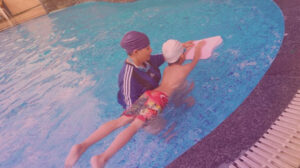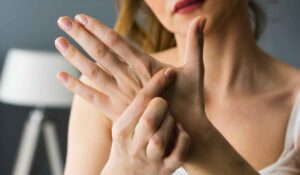Get back to life after stroke
Life after Stoke
Stroke occurs when blood flow to an area in the brain is cut off. The brain cells, deprived of the oxygen and glucose needed to survive die. When a stroke causes damage to the part of the brain that controls movement, one may feel weakness or paralysis on one side of the body and problems with moving and caring out everyday activities.
PHYSIOTHERAPY is an important part of the rehabilitation for stoke. Techniques such as Exercisers, Manipulation, Massage, Skill Training and Electrical treatment are used to help heal and recover movements. The main focus of physiotherapy after stroke is to help one learn to use both sides of body again and regain as much strength and movement as possible. It is important to be as active as possible as soon as one can after the stroke, whether this is continuing with your previous activities or just sitting in a chair.
In the early stages, and for patients with relatively mild problems, physiotherapy will focus on preventing complications and restoring their ability to move and be active again. As time goes on, and for patients with more severe problems, a full recovery is less likely and so physiotherapy focuses on helping to become more independent and do what is important, for example using equipment or doing things a different way. physiotherapy treatment in early days starts with correct positioning in order to prevent bed sores. Chest physiotherapy is given when the patient is immobile.
EXERCISES
If patient’s symptoms don’t improve in a few days and he/she is medically stable, physiotherapist will use more active therapy to teach how to do the things that are difficult and get limbs moving again.
Passive Rom Exercises: This refers to an external force moving a body part rather than it moving on its own volition. Examples would be a patient taking his strong arm and moving the weak or paralyzed arm, a therapist moving an affected limb, or a machine moving an extremity. Passive range of motion is important to maintain flexible joints and prevent joint contracture.
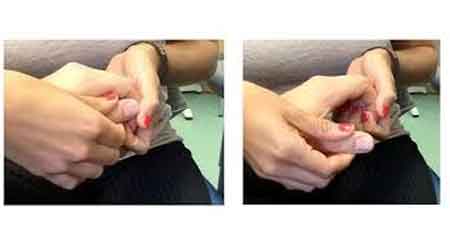
Joint contracture occurs when there are structural changes to the soft tissue such as tightening or shortening of muscles and tendons that restrict movement. It is important to perform passive range of motion even if you have experienced total paralysis because a contracture can predispose one to skin breakdown, tissue irritation, pain, decreased blood flow, and prevent one from moving a limb if muscle function does return. Joint contractures also interfere with activities of daily living such as trying to wash under one’s arm, donning clothing over a contracted elbow or knee, or cleaning the fingernails of contracted hands.
Active Assistive Range of Motion (AAROM) – This type of range of motion occurs when a weak limb is assisted through movement. The weak limb is helping but cannot perform all of the work on its own. An example would be someone that could only partially lift their arm and a therapist assists them in lifting the arm further (or they use their strong arm as an assist). Active assistive range of motion is helpful in strengthening a limb that does not yet have full range of motion.
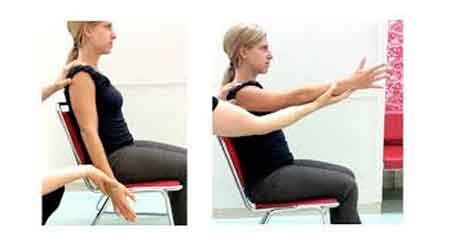
Active Range of Motion (AROM) – This occurs when a person can move a body part on their own without assistance. Many stroke patients with movement on the weak side may not be strong enough to add resistance exercises and may perform active range of exercises. AROM helps promote joint flexibility, strengthening, and increased muscular endurance.
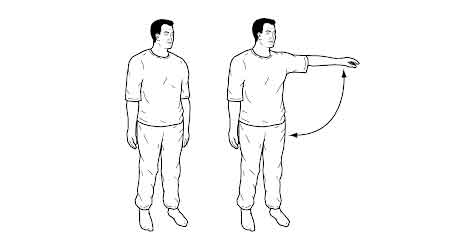
Strengthening or Resistance Training– Life after Stroke rehab exercises often consists of strengthening activities that involve moving a body part against resistance. There are many types of strengthening exercise equipment including bands, dumbbells, tubing, putty, and exercise machines.
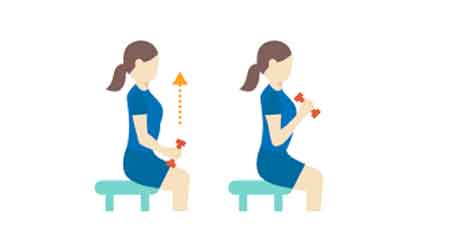
Stretching Exercises – Muscles often become tight or have tone after a stroke. Stretching on a regular basis can help prevent joint contracture and muscle shortening. Sometimes manual stretching is not enough and a patient may need a splint to help stretch tight joint and muscles.
Weight Bearing Exercises – These stroke rehab exercises are often unfamiliar to patients but can be some of the most important exercises that one does. Weight bearing can help reduce excessive tone brought on by a stroke and strengthen weak muscles. Weight bearing also helps prevent bone loss. If a stroke victim tends to put all of their weight on the strong leg, then the weak leg will begin to experience decreases in bone density. This bone loss can lead to “brittle bones” which also puts a person at higher risk for fractures. It is important to do weight bearing for the arms and legs.
Scapula Mobilization – The muscles that attach to the scapula (or shoulder blade) are often affected after a stroke. These muscles may become weak or have increased tone. If the scapula cannot move properly, one cannot lift their arm overhead. Scapular mobilization exercises help move or mobilize the scapula in order to maintain or improve shoulder range of motion and prevent pain.
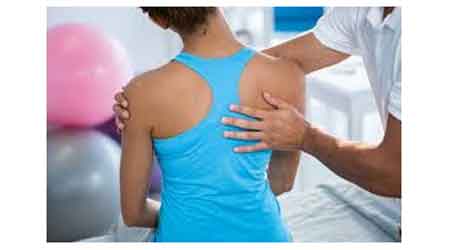
Balance Exercises– Stroke victims often have poor balance. If balance is affected, one of the first things a patient must learn in stroke rehab is the ability to maintain their balance in sitting. Sitting balance exercises focus on strengthening the core or trunk musculature.
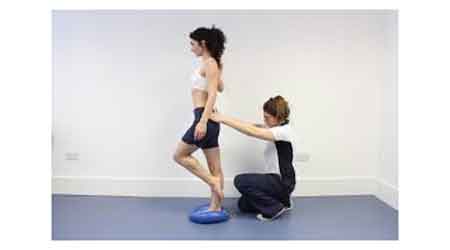
Standing balance exercises will help improve a patient’s ability to stand in place as well as walk or perform activities without loss of balance. Balance exercises are important in helping prevent falls. Life after Stoke Balance Exercises includes Weight shifts from side to side, Weight shift from forward to backward, Leaning forward, Leaning sideways on elbows, Reach outs in different direction.
Gross Motor Skills – Coordination exercises for gross motor skills emphasize fine tuning large muscle movements such as walking, throwing, and moving the limbs in a coordinated manner.
Fine Motor Skills – Hand dexterity is important for picking up objects, feeding oneself, buttoning clothes, writing and many other activities. Fine motor exercises help a patient improve use of the hand for manipulating small objects.
Constraint Induced Movement Therapy (CI Therapy) – Sometimes referred to as forced use therapy by some, this stroke rehab technique involves limiting the movement of the strong side and “forcing” the weaker side to attempt activities.Eye Exercises – Stroke survivors may suffer visual problems such as visual field loss, visual spatial disorders, impaired eye movement or double vision. Eye exercises can help with these visual deficits. Vision therapy is often overlooked in stroke rehab. If you have visual impairment following a stroke, ask your occupational therapist or an optometrist about eye exercises. Participants in a 2009 study actually regained some of their visual field loss after doing eye exercises for an extended period of time.
Improving Sensation (Sensory Re-education) – Following stroke, one may have decreased sensation, numbness, or tingling. This can be especially difficult if sensation is impaired in the hands. Forms of sensation that can be impaired are detection of heat/cold, pain, light and deep touch. Stroke patients may also be unable to discriminate where they are being touched (i.e. touch on the elbow feels as if it occurred on the upper arm). Decreased sensation can greatly impair the use of hands causing one to drop objects, have difficulty with fine motor tasks, and be at risk for burning oneself. Sensory re-education involves retraining the sensory system in the attempt to improve sensation and hand function.
Swallowing Exercises – Dysphagia or trouble with swallowing can be a very serious impairment even life threatening. If food or drink enters into the lungs rather than the stomach, this is called aspiration and can lead to aspiration pneumonia. A speech therapist can help a patient with improving swallowing. The speech therapist can also recommend the appropriate diet to prevent aspiration. This may include thickened liquids, pureed food, or even nutrition through a feeding tube if a patient’s swallowing is severely impaired. One may not even be aware that they are aspirating food or drink so it is important to have a swallow study after a stroke and participate in any exercises or recommendations made by the speech therapist.
Brain Exercises (Cognitive Exercises) – The speech therapist will also help patients with exercises to improve cognition. These may involve exercises to improve memory, problem solving, reasoning, following directions, initiation of activity, and comprehension. The occupational therapist may also work on cognitive activities with a patient to help with daily tasks such as paying bills, cooking, and work activities Life after Stoke.
Speech Exercises – Exercises to improve speech may aim at improving articulation due to weak mouth and tongue musculature or improving a patient’s inability to recall or understand words. Stroke patients with expressive aphasia, receptive aphasia, and dysarthria will all need speech therapy.
TREATMENT OF STROKEBY BEST PHYSIOTHERAPIST SERVICES IN DHAKOLI
A qualified physiotherapist is skilled enough to help you to cop up with difficulties which are face by patient. The physiotherapist examines the texture of muscle i.e. spasticity or flaccidity and treat accordingly moreover they also help in correcting balance and coordination issues. They also examine the difficulties which are face by the patient and work precisely on them. They also provide moral support to the patient which leads to strong mental state which ultimately gives fast recovery Life after Stoke
Blossom physiotherapy has, well qualified team of physiotherapist in Dhakoli. Ultra modular equipment for balance, fine movement. Here physiotherapist work on patient’s various difficulties and work accordingly so that patient can come into their daily activities as much as possible with various techniques and modifications in activities. Blossom physiotherapy is ready to help you in every manner. For further information log into blossomphysitherapy.


